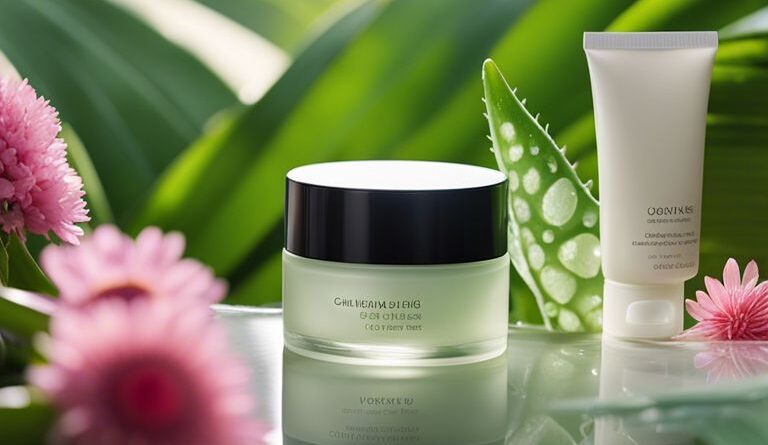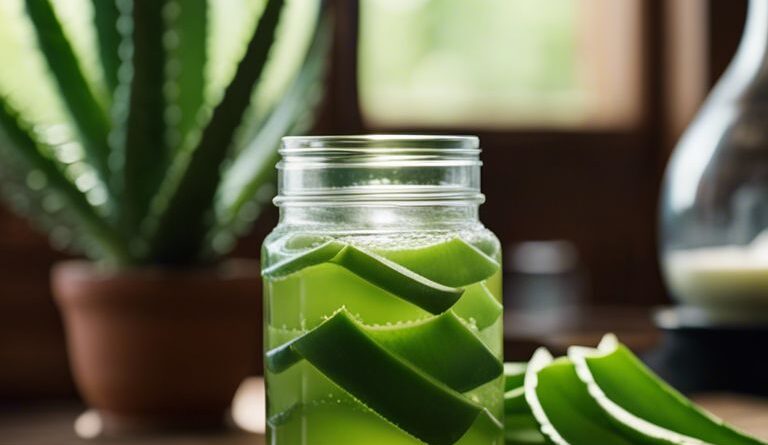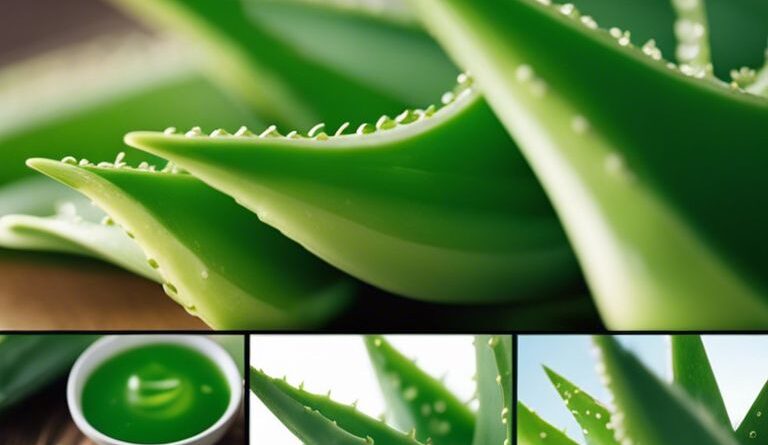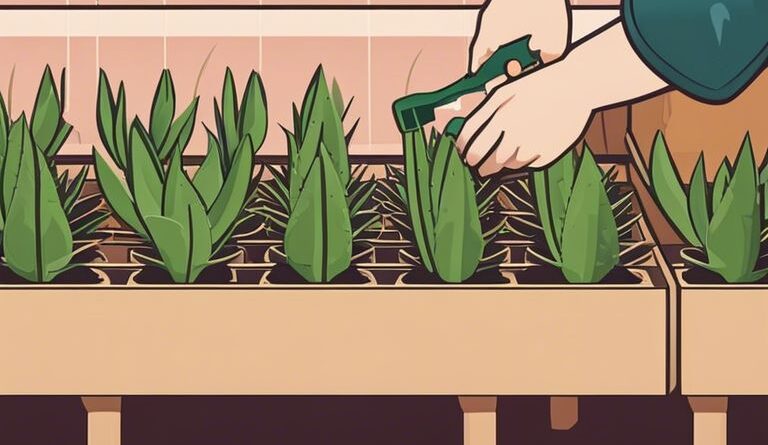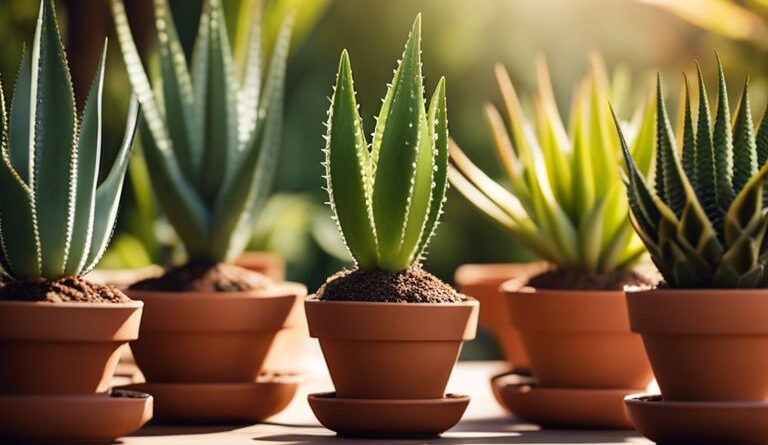

"Organic Aloe Vera Gel from freshly cut 100% Pure Aloe - Big 12oz - HighestQuality, Texas grown, Vegan, Unscented - For Face, Skin, Hair, Sunburn relief"
Global Healing Aloe Vera Bio-Active Organic Leaf Supplement - 200x Concentrate Formula with Highest Concentration of Acemannan - Aloin-Free - Gut Health & Immune Support - 60 Capsules
Home gardeners looking to cultivate healthy, thriving aloe vera plants will benefit from expert guidance on how to succeed in this endeavor. Growing aloe vera at home is not only rewarding but also offers a plethora of benefits for skincare, health, and even air purification. In this comprehensive guide, we will provide crucial tips and tricks garnered from experienced gardeners and plant enthusiasts to ensure your aloevera plants flourish within the confines of your home. From proper planting techniques to ideal sunlight exposure and correct watering schedules, we will probe into the minutiae of creating the perfect environment for your aloe vera to thrive. Stay tuned to learn the insider secrets to growing this versatile and beneficial plant successfully in your own home.
Key Takeaways:
- Choose the right soil: Aloe vera plants thrive in well-draining soil mixtures such as cactus or succulent soil. Make sure the pots have drainage holes to prevent overwatering.
- Provide sufficient sunlight: Place your aloe vera plant in a location with bright, indirect sunlight for at least 6 hours a day. Rotate the plant regularly to ensure even growth.
- Water sparingly: Aloe vera plants are drought-resistant and prefer dry conditions. Water the plant only when the top inch of soil is dry, and be cautious not to overwater to prevent root rot.
Essential Factors for Growing Aloe Vera
Now, when it comes to growing Aloe Vera at home, there are several crucial factors to consider to ensure the plant thrives. Perceiving How to Plant Aloe Vera (with Pictures) will guide you through the planting process.
Choosing the Right Variety of Aloe Vera
One key factor in successfully growing Aloe Vera is selecting the right variety for your home environment. Each variety has its own specific care requirements, so it’s crucial to choose one that suits your conditions.
Optimal Soil Conditions
With Aloe Vera, the soil requirements are crucial for its growth. Choosing a well-draining cactus or succulent mix will prevent waterlogged roots, which can cause the plant to rot.
Right, aloe vera plants thrive in well-draining soil that replicates their natural habitat. Plus, using a mixture of sand, perlite, or pumice in your soil will aid in drainage and prevent overwatering, which can be detrimental to the plant’s health.
Appropriate Lighting and Temperature
| Lighting | Temperature |
| Aloe vera plants require direct sunlight for at least 6 hours each day. | They thrive in warm temperatures between 60-80°F (15-27°C). |
Plus, it’s important to note that inadequate light or extreme temperatures can hinder the growth of the plant. Be sure to place your Aloe Vera in a sunny spot and protect it from cold drafts or frost to ensure its well-being.
Step-by-Step How-To Guide
| Planting Your Aloe Vera | Watering Techniques |
Planting Your Aloe Vera
On successfully acquiring an aloe vera plant, it’s time to plant it. Choose a pot with adequate drainage holes to prevent waterlogging. Fill the pot with well-draining cactus or succulent soil, leaving some space at the top for the aloe vera to settle in.
Watering Techniques
There’s a delicate balance to strike when it comes to watering your aloe vera. It is crucial to let the soil dry out between waterings to avoid root rot, a common issue with overwatering. Water your aloe vera deeply but infrequently, allowing excess water to drain out completely.
Overwatering is the most common mistake that leads to aloe vera plant demise. Make sure the top few inches of the soil are dry before watering again. Do not forget, aloe vera plants are drought-resistant and can withstand periods of neglect better than overwatering.
Advanced Tips for Aloe Vera Care
- Fertilizing Your Aloe Vera Plant
- Managing Pests and Diseases
| When | How |
| During growth season | Dilute a balanced houseplant fertilizer by half and apply every 3-4 weeks |
| Spring and summer | Avoid fertilizing in fall and winter |
Fertilizing Your Aloe Vera Plant
While aloe vera is generally low-maintenance, it benefits from occasional fertilization during its growth season. Use a balanced houseplant fertilizer diluted by half to avoid overfeeding. Apply the fertilizer every 3-4 weeks in the spring and summer, but refrain from fertilizing in the fall and winter when the plant is dormant.
| Pests | Diseases |
| Mealybugs | Rust |
| Aphids | Root rot |
Managing Pests and Diseases
Some common pests that may affect your aloe vera plant include mealybugs and aphids, while diseases like rust and root rot can also pose a threat. For instance, overwatering can lead to root rot, posing a serious risk to the plant’s health. It is imperative to regularly inspect your aloe vera for any signs of pests or diseases and take prompt action to address them. Ensure proper drainage and avoid overwatering to prevent root rot, while also keeping an eye out for pests and using natural remedies or pesticides as needed.
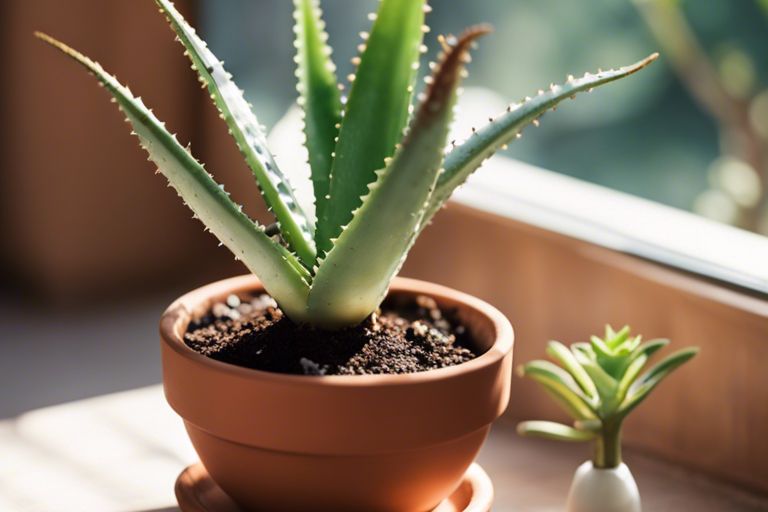
Additional Considerations
Effective Propagation Methods
Many gardeners prefer to propagate aloe vera through offsets or “pups,” which are baby plants that sprout up around the base of mature plants. Assuming you have a healthy mother plant, carefully remove the offsets and plant them in a well-draining soil mix. Make sure to provide bright, indirect sunlight and water sparingly to establish new roots.
When and How to Harvest Aloe Vera Gel
There’s a common misconception that you can harvest aloe vera gel at any time, but it’s crucial to wait until the plant is at least three years old to ensure a potent and effective gel. When ready to harvest, cut a few leaves from the outer part of the plant, close to the base, and squeeze out the gel. Remember to only harvest what you need to preserve the plant’s health and longevity.
Effective harvesting techniques involve using a clean, sharp knife to avoid damaging the plant and obtaining the purest gel. Store the harvested gel in a sealed container in the refrigerator for up to a week for maximum freshness and efficacy.
Final Words
As a reminder, growing aloe vera at home can be a rewarding experience that not only adds a touch of green to your living space but also provides a natural remedy for various skin conditions. By following expert tips such as choosing the right soil, providing proper sunlight, and avoiding overwatering, you can ensure that your aloe vera plant thrives and continues to benefit you for years to come. Remember to give it the care and attention it needs, and soon enough, you’ll be enjoying the many uses of this versatile plant right in the comfort of your own home.
FAQ
Q: What are the benefits of growing aloe vera at home?
A: Growing aloe vera at home offers a range of benefits, including easy access to natural remedies for skin conditions, the convenience of having a low-maintenance plant, and the satisfaction of cultivating a useful plant.
Q: How much sunlight does aloe vera need to grow successfully?
A: Aloe vera thrives in bright, indirect sunlight. It is best to place your aloe vera plant near a window where it can receive ample sunlight throughout the day.
Q: What type of soil is best for growing aloe vera?
A: A well-draining cactus or succulent potting mix is ideal for growing aloe vera. Make sure the soil is sandy and allows excess water to flow out easily to prevent root rot.
Q: How often should I water my aloe vera plant?
A: Aloe vera plants are drought-resistant and do not require frequent watering. It is best to water them deeply but infrequently, allowing the soil to dry out completely between watering sessions.
Q: How can I propagate aloe vera to grow more plants?
A: Aloe vera can be easily propagated by separating the offsets or “pups” that grow alongside the main plant. Gently remove the pups and replant them in a separate pot with well-draining soil to grow new aloe vera plants.


